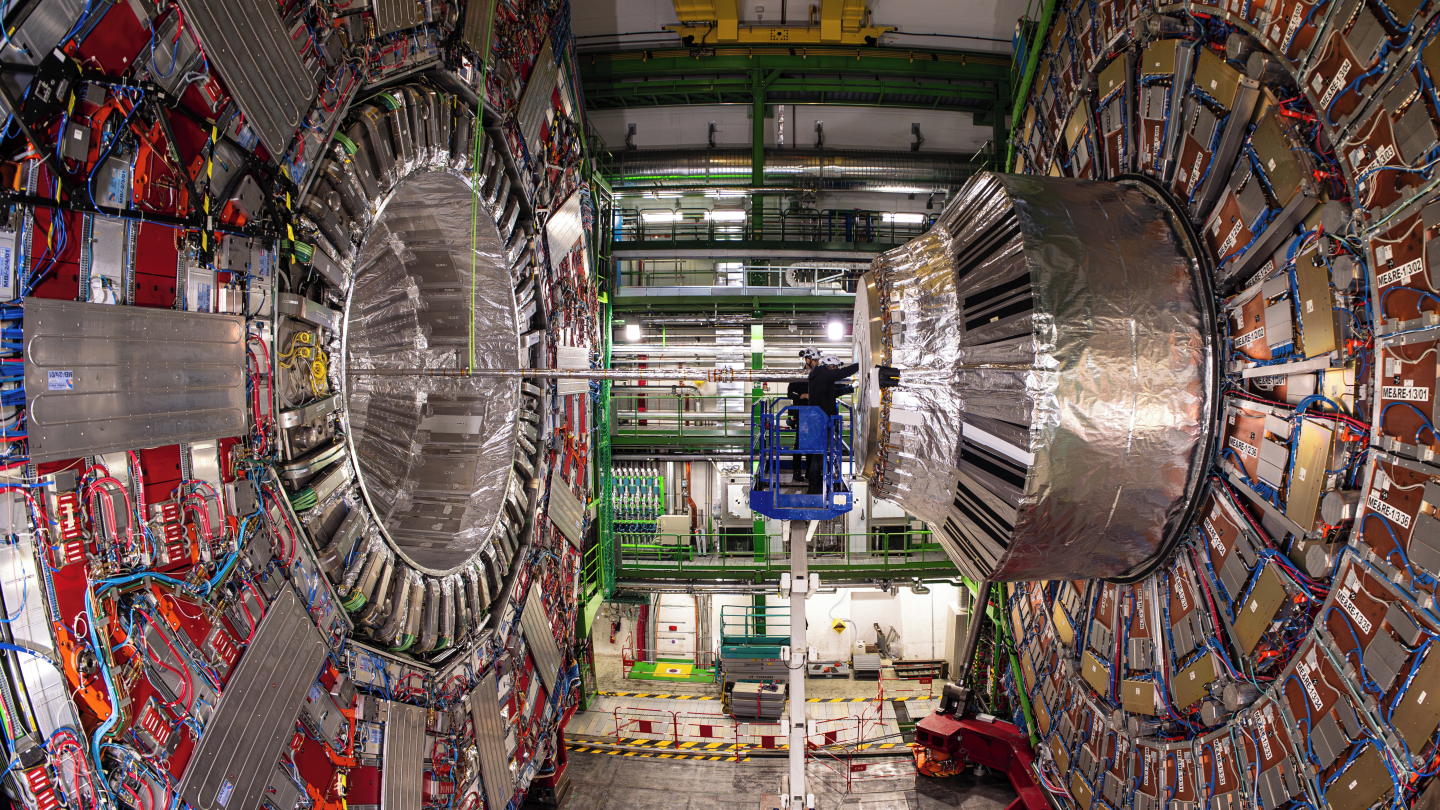Follow us on Google News (click on ☆)
The CMS collaboration at CERN has reached a new milestone in understanding the Higgs boson by investigating its decay into a pair of charm quarks (c quarks). This advancement could help us better understand how this mysterious particle gives mass to matter.

Photo of the CMS experiment (Image: CERN)
The Higgs boson, discovered in 2012 thanks to the Large Hadron Collider (LHC), is at the heart of the Standard Model of particle physics because it explains why particles have mass. So far, scientists have confirmed that the Higgs interacts with the heaviest quarks (top and bottom). But for lighter quarks – like the charm quark, up quark, or down quark, which make up ordinary matter – evidence is still lacking.
To make progress, researchers observe how the Higgs boson transforms after its creation, particularly when it decays into quarks. Recently, during a seminar at CERN, the CMS collaboration presented a groundbreaking analysis: they searched for events where a Higgs boson is produced with two top quarks and then decays into two charm quarks. To succeed, they used some of the most advanced artificial intelligence tools.
Detecting such an event isn't simple. Quarks, immediately after their creation, transform into showers of particles called "jets," which look very similar. Distinguishing a jet from a charm quark from those produced by other quarks is extremely difficult. Traditional methods aren't enough. Innovation was necessary.
"We completely rethought our approach to analyzing this data," explains Sebastian Wuchterl, a researcher at CERN. "Since charm quarks are even more elusive than bottom quarks, we used cutting-edge machine learning algorithms to isolate their traces among other events."
Physicists used two types of algorithms. The first, a graph neural network, helps identify the characteristic jets from c quarks. The second, a transformer network (similar to the one used by ChatGPT, but here for sorting events), helps distinguish Higgs decay signals from background noise. These tools were trained on hundreds of millions of simulated data points to be as precise as possible.
Using data collected between 2016 and 2018, combined with past analyses, the CMS team succeeded in setting the strictest limits ever obtained on how the Higgs boson could interact with the charm quark. In short, they reduced uncertainty by 35% compared to previous results – a significant step forward for testing current theoretical predictions.
"This is a major breakthrough," says Jan van der Linden, a researcher at Ghent University. "With more data in the coming years and even better tools, we might finally directly observe this interaction between the Higgs and charm quarks – something that seemed out of reach not long ago."
As the LHC continues its experiments, improvements in identifying c quarks and sorting events will pave the way for future discoveries. CMS, along with ATLAS – the other major LHC experiment – might soon confirm that the Higgs boson does indeed decay into charm quarks. This would represent another step toward fully understanding how all matter particles acquire their mass, while further testing a 50-year-old theoretical model.